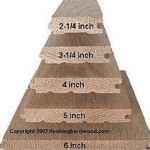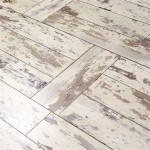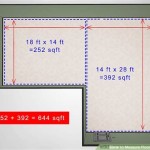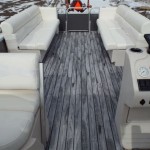Interlocking Outdoor Patio Tile Flooring: A Comprehensive Guide to 6-Piece Sets
Interlocking outdoor patio tiles have become increasingly popular as a versatile and aesthetically pleasing flooring solution for various outdoor spaces. These tiles, typically sold in sets, including the convenient 6-piece configuration, offer a practical alternative to traditional patio materials like concrete, wood decking, or stone pavers. Their ease of installation, durability, and design flexibility contribute to their appeal among homeowners and renters alike looking to enhance their outdoor living areas.
This article aims to provide a comprehensive understanding of interlocking outdoor patio tiles, focusing specifically on 6-piece sets. It will delve into the various materials used in their construction, the advantages and disadvantages associated with each material, the installation process, maintenance requirements, and factors to consider when selecting the right tiles for specific needs and preferences.
Understanding the Materials Used in Interlocking Patio Tiles
The composition of interlocking patio tiles significantly impacts their performance, durability, and aesthetic appeal. Common materials used in their construction include plastic composites, wood composites, rubber, and stone.
Plastic Composites: These tiles are commonly made from recycled plastics, creating an environmentally friendly option. Polypropylene (PP) and polyethylene (PE) are often used due to their water resistance and durability. Plastic composite tiles are known for their resistance to moisture, mold, and mildew, making them suitable for areas prone to dampness or heavy rainfall. They are typically lightweight, making them easy to transport and install. Furthermore, plastic composites offer a wide range of colors and textures, including options that mimic the appearance of wood or stone. However, they can be susceptible to fading in direct sunlight over extended periods, and their structural integrity might be compromised under extreme weight or impact.
Wood Composites: These tiles blend wood fibers with plastic, offering a more natural aesthetic appeal while maintaining some of the advantages of plastic. Wood composite tiles, often referred to as wood-plastic composite (WPC), provide a warmer and more textured surface than purely plastic options. They are more resistant to fading and offer a more natural look and feel. While offering improved durability compared to natural wood, wood composite tiles still require maintenance to prevent mold and mildew growth, particularly in shaded or damp areas. They may also be more expensive than plastic composite tiles.
Rubber: Rubber interlocking tiles are typically made from recycled tires, offering excellent shock absorption and slip resistance. These tiles are ideal for play areas, gyms, or any location where safety is a primary concern. Rubber tiles are known for their durability and ability to withstand heavy use. They also provide a comfortable surface to walk on and reduce noise. However, rubber tiles can emit a distinct odor, especially when new, and they may not offer the same aesthetic appeal as other tile materials. They also tend to be darker in color, which can absorb and retain heat in direct sunlight.
Stone: Interlocking stone tiles often feature a thin layer of natural stone bonded to a plastic or composite base. This construction provides the aesthetic appeal of natural stone with the ease of installation associated with interlocking systems. Options include slate, granite, and travertine. Stone tiles are highly durable and resistant to weathering. They offer a luxurious and sophisticated look, but tend to be the most expensive option. They can also be heavier than other tile types, making installation more challenging. Depending on the type of stone, they may require sealing to prevent staining or water damage.
Each material presents unique advantages and disadvantages, requiring careful consideration based on the specific application, environmental conditions, and aesthetic preferences.
Advantages of Choosing Interlocking Patio Tiles in a 6-Piece Set
Opting for interlocking patio tiles, particularly in a 6-piece set, offers several key advantages compared to alternative patio flooring solutions.
Ease of Installation: One of the primary benefits is the simplicity of installation. Interlocking tiles typically feature a click-and-lock mechanism that allows for quick and easy assembly without the need for specialized tools or professional assistance. The 6-piece set provides a manageable quantity for smaller projects or for testing the suitability of a specific tile type before committing to a larger purchase. This do-it-yourself (DIY) friendly installation process can save significant time and money compared to hiring a contractor for traditional patio construction.
Portability and Flexibility: Interlocking tiles are easily portable, allowing for relocation or reconfiguration of the patio space as needed. The 6-piece set format further enhances this portability, making it convenient to transport and store the tiles. This flexibility is particularly beneficial for renters or individuals who anticipate moving frequently. The tiles can be disassembled and reinstalled in a different location with minimal effort. Moreover, if a tile gets damaged, it can be easily replaced without disturbing the entire flooring surface.
Drainage and Maintenance: Many interlocking tile designs incorporate drainage channels or gaps that allow water to flow through, preventing puddling and reducing the risk of slips and falls. This feature is particularly important in areas prone to heavy rainfall or where standing water is a concern. Furthermore, the raised design of some tiles allows for air circulation beneath the surface, which helps to prevent the growth of mold and mildew. Cleaning is typically straightforward, involving simple sweeping, hosing down, or the use of mild detergents. The modular nature of the tiles also allows for easy removal and cleaning of individual tiles as needed.
Cost-Effectiveness: While the initial cost of interlocking patio tiles may vary depending on the material and quality, the overall cost-effectiveness can be significant due to the reduced labor costs associated with installation. The 6-piece set format can be particularly advantageous for smaller budgets, allowing for gradual expansion of the patio area over time. Furthermore, the durability and low maintenance requirements of interlocking tiles contribute to their long-term cost savings.
Key Considerations When Selecting Interlocking Patio Tiles
Choosing the right interlocking patio tiles involves careful consideration of several factors to ensure optimal performance, durability, and aesthetic appeal.
Intended Use and Location: The intended use of the patio area and its location will significantly influence the choice of tile material. For high-traffic areas or areas subject to heavy use, durable materials like stone or rubber are recommended. For areas where aesthetics are a primary concern, wood composite or stone tiles may be preferred. Consider the exposure to sunlight, rainfall, and temperature fluctuations. In areas with prolonged exposure to direct sunlight, UV-resistant materials like plastic composites with UV inhibitors are essential to prevent fading. In areas prone to moisture, materials with good drainage and resistance to mold and mildew are crucial.
Substrate Preparation: While interlocking tiles are relatively easy to install, proper substrate preparation is essential to ensure a stable and level surface. The substrate should be compacted and free of debris and vegetation. A layer of gravel or sand may be required to provide proper drainage and leveling. Uneven surfaces can lead to instability and premature wear and tear of the tiles. Ensuring a solid and level base will prolong the life of the patio surface and prevent tripping hazards.
Aesthetic Preferences and Design Considerations: Interlocking patio tiles are available in a wide range of colors, textures, and patterns, allowing for customization of the patio space. Consider the overall design aesthetic of the outdoor area and choose tiles that complement the existing architecture and landscaping. Darker colors can absorb more heat, while lighter colors can reflect sunlight and help keep the area cooler. Different patterns can be created by alternating tile colors or orientations. The size and shape of the tiles can also influence the overall appearance of the patio. Consider the desired level of privacy and whether the tiles will be used to create a defined border or edge.
Maintenance Requirements: Different tile materials require different levels of maintenance. Wood composite tiles may require periodic sealing or staining to protect them from moisture and UV damage. Stone tiles may need to be sealed to prevent staining. Plastic and rubber tiles typically require minimal maintenance, but regular cleaning is recommended to prevent the buildup of dirt and debris. Consider the time and effort required to maintain the tiles and factor this into the decision-making process.
Budget and Accessibility: Establish a budget for the project and compare the costs of different tile materials and installation options. Factor in the cost of tools, substrate preparation materials, and any necessary accessories. The 6-piece set format can be a cost-effective way to start the project and gradually expand the patio area over time. Consider the accessibility of the installation site and the ease of transporting the tiles. Heavier tiles may require additional assistance during installation.
By carefully considering these factors, individuals can select the ideal interlocking patio tiles in a 6-piece set that meets their specific needs, preferences, and budget, creating a functional, aesthetically pleasing, and durable outdoor living space.
In conclusion, interlocking outdoor patio tiles in 6-piece sets offer a convenient, versatile, and cost-effective solution for enhancing outdoor living spaces. Understanding the various materials, advantages, and considerations involved in selecting and installing these tiles is crucial for achieving optimal results and creating a patio area that is both functional and aesthetically pleasing.

Interlocking Patio Tile Flooring 6 Pc Collections Etc

Interlocking Patio Tile Flooring 6 Pc Terracotta Com

Pure Garden 1 Ft W X L 6 Patio Tiles Wood Polypropylene Interlocking Deck Tile Flooring In Mocha 50 Lg1265 The Home Depot

Perforated Interlocking Patio Tiles Over Concrete Made In Usa

Gogexx 12 In W X L Outdoor Patio Square Slat Plastic Interlocking Composite Flooring Deck Tile Gray Pack Of 9 Cmm G111958 T9 The Home Depot

Interlocking Decking Tiles Outdoor Hsunns 12 X Set Of 20 Wooden Floor For Indoor And Patio Garage Pavers Brown A6945 Com

Pure Garden 1 Ft W X L 6 Patio Tiles Woodgrain Wood Polypropylene Interlocking Deck Tile Flooring In Brown 50 Lg1267 The Home Depot

Perforated Interlocking Patio Tiles Over Concrete Made In Usa

Nature Spring Patio And Deck Interlocking Brick Look Outdoor Tiles Red 6 Pc Target

Set Of 6 Interlocking Wood Grain Composite Garden Deck Tile Patio Floor Tiles Dark Grey 30cm X 60cm 1 08m² Diy At B Q
Related Posts








